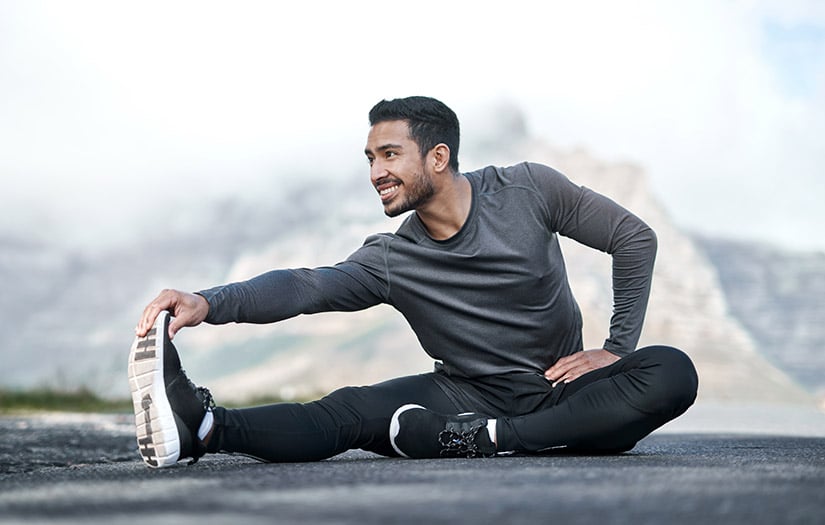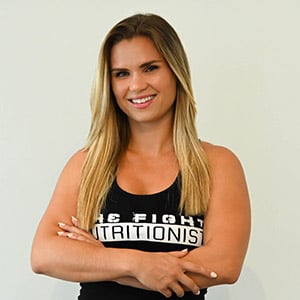“Make sure you stretch!” - Something we often hear before or after we participate in any sort of exercise. But is stretching that good for you? What exactly are the benefits of having a regular stretching routine? Let's explore the benefits of stretching below.
Pro tip: The best way to learn about stretching is to apply what you learn in the field. Check out the NASM stretching certification course and become a Stretching and Flexibility Coach today.
5 Benefits of Stretching
The five biggest benefits of stretching are:
- Increasing flexibility to prevent injury
- Reducing inflammation
- Improving strength
- Freedom of movement
- Relaxation and mental wellbeing
#1 Increasing Flexibilty to PRevent Injury
By increasing flexibility, or engaging in regular flexibility training, we can reduce the risk of muscle imbalances.
When muscle imbalances exist, the body will take the path of least resistance when it comes to performing various movement patterns. This leads to poor posture, which leads to improper movement and form, which increases the risk for injury.
#2 Reducing Inflammation
Flexibility training can reduce inflammation! Poor posture and repetitive movements that decrease or antagonize the body’s range of motion are treated by the body as an injury. As a result, the body will try and heal that injury.
Injury induces inflammation in the body, and as a protective mechanism, the body will increase muscle tension to prevent further injury. That increase in muscle tension increases muscle adhesions (commonly known as “knots”), which further decrease the normal movement or elasticity of your muscle.
#3 Improving Strength
Flexibility can improve your strength and performance in physical activities. The goal of flexibility is to have control of your muscles in a full range of motion. So, improving your flexibility is also improving your strength!
Furthermore, if your muscles are sore or stiff you may not be able to engage in explosive movements or perform as well during your training.
#4 Freedom of Movement
Flexibility allows for freedom of movement to perform everyday activities such as bending over to tie your shoes, lifting groceries, and vacuuming the floor. These are things that can become more difficult as we age, so we want to regularly engage in a stretching routine, so these everyday activities don’t become difficult.
#5 Relaxation and Relief
Stretching provides relaxation and relief! Which is not only beneficial physically, but mentally as well!
The Types of Stretching
Self-Myofascial Release (SMR)
This form of stretching involves using items such as a foam roller, lacrosse balls, and similar objects to reduce trigger points, or “knots”, within muscles. When muscles are tight or have “knots”, gentle pressure can help release these “knots” to allow the muscle fibers to return to a straighter alignment and release pressure.
When performing a myofascial release, it’s important that when you find a “trigger point”, that you hold pressure on that area for a minimum of 30 seconds. This is a great form of stretching to use before exercise and even before other forms of stretching!
Read also: Foam Roller Exercises
Static Stretching
Static stretching is probably the most commonly known form of stretching. It involves lengthening a muscle to its furthest point and holding that position for a minimum of 30 seconds. This type of stretching can help lengthen overactive, or tight muscles, and there’s evidence to show this type of stretching increases flexibility over time if performed daily.
Read also: Is Static Stretching Effective for Injury Prevention?
Active Stretching
Active stretching is a form of stretching in which you use the strength of a certain muscle group to lengthen or stretch an opposing muscle group. Yoga is a great example in which certain poses require activation or contraction of certain muscle groups as a way to stretch the opposing muscle.
Active stretching can help increase range of motion and is a great warm-up activity before initiating high-intensity exercise or sports competition.
Dynamic Stretching
Dynamic stretching is movement-based stretching. It requires working muscles through a range of motion to increase flexibility and mobility. Unlike static and active stretching, these poses are not held.
Dynamic stretching is also a great form of stretching to warm up muscle groups before initiating high-intensity exercise or sports competition.
Read also: Dynamic Stretching Demonstrated
Starting a stretching routine
If you’re new to stretching, it’s important to start slow. Flexibility exercise via a stretching routine can be started at any age! And improvements can be seen as early as 3 weeks if performing a stretching routine regularly.
When starting a stretching routine, it’s important to keep note of a few things:
1. When stretching, major muscle groups around the shoulders, chest, neck, lower back, hips, legs, and ankles should be targeted.
2. You should engage in a stretching routine at minimum 2-3x/week.
3. When beginning, hold static stretches for 10-30 seconds. But the goal is to hold each stretch for a minimum of 60 seconds.
4. Repeat stretches 2-4 times to get optimal benefits!
The type of stretching you should incorporate will largely depend on your experience and fitness level, but at some point, every form should be utilized.
When starting, warm up your muscles with foam rolling and perform 5-6 different static stretches. Holding each one for at least 10 seconds, and gradually build your way up to 60 seconds.
Start by allocating 5 minutes of stretching to a warm-up or cool down after your regular exercise routine. On days you don’t exercise, still spend about 5-10 minutes stretching when you have free time to loosen up tension in your body.
When Is The Best Time to Stretch?
You can stretch at any time in the day! However, muscles tend to be tighter when we just wake up so it’s important to warm up with a light jog or dynamic movements before getting into static stretching if choosing to stretch first thing in the morning.
Stretching at night and before bed can also help improve sleep! Some studies have shown that a light stretching routine in the late evening or right before sleep helped improve sleep quality in people with mild sleep disorders.
Health risks of stretching: can you overdo it?
Stretching involves lengthening a muscle to its furthest point. Therefore, a muscle can sometimes be stretched beyond this point, and without proper preparation, it can lead to overstretching. While this is unlikely, it is still possible.
To prevent overstretching from occurring, make sure you properly warm up either through dynamic motions, light activity, or foam rolling before engaging in any intense form of stretching. Forcing muscles that are tight into a lengthened position very quickly can cause micro-tears in your muscles. This will cause inflammation and injury and limit mobility for some time. Something that would be counterproductive to improving flexibility!
The Takeaway
Stretching is an important aspect of any fitness routine whether you’re an elite-level athlete or starting an exercise program for the first time. Improving flexibility has various health benefits that will improve quality of life and increase overall fitness and performance.
It’s never a bad idea to reach out to a certified personal trainer before beginning a flexibility or stretching program to get ideas on what will be most beneficial for you and your goals.
References
https://www.ncbi.nlm.nih.gov/pmc/articles/PMC6781703/
NASM essentials of personal fitness training: 6th edition
ACSM’s guidelines for exercise testing and prescription: 10th edition

















